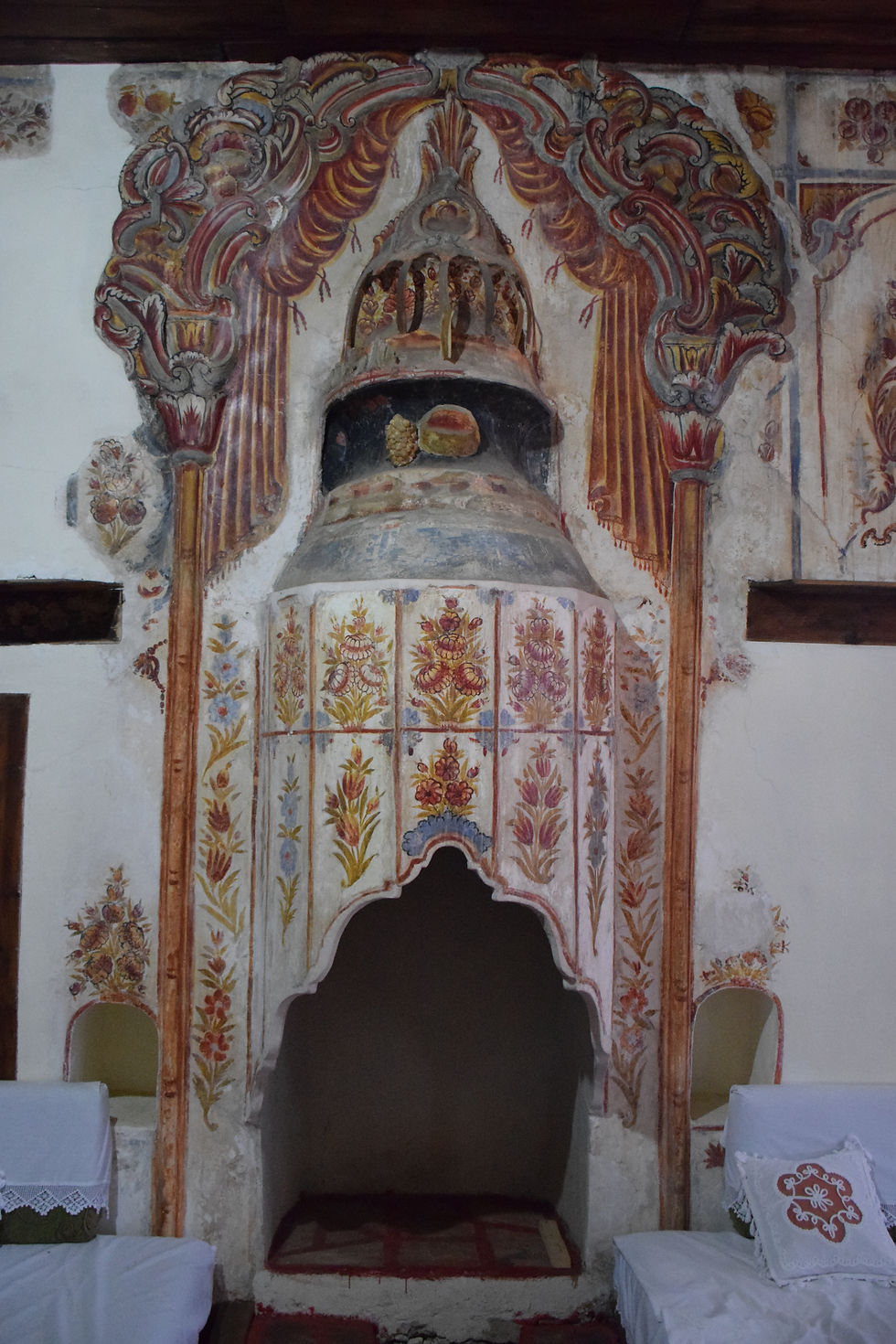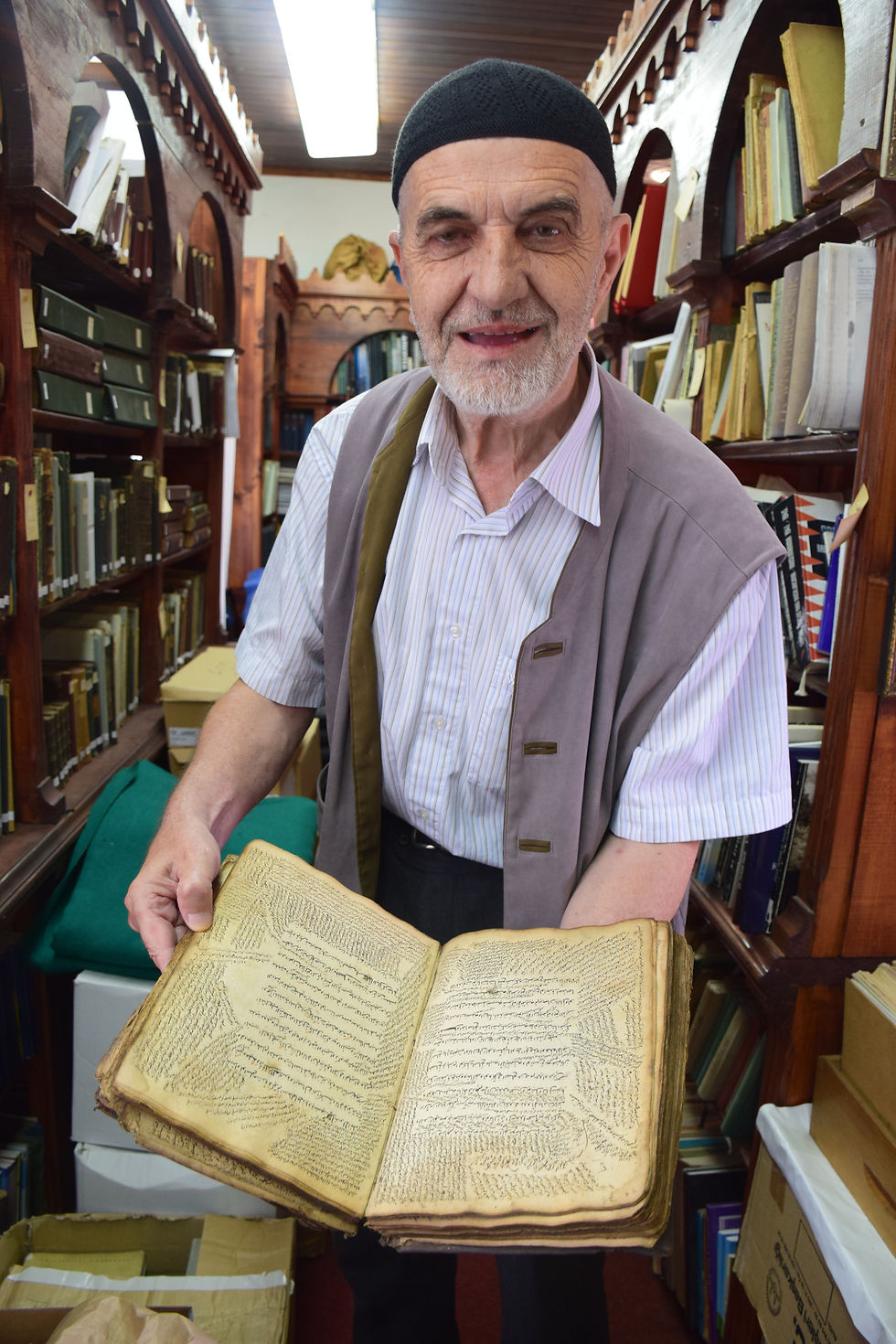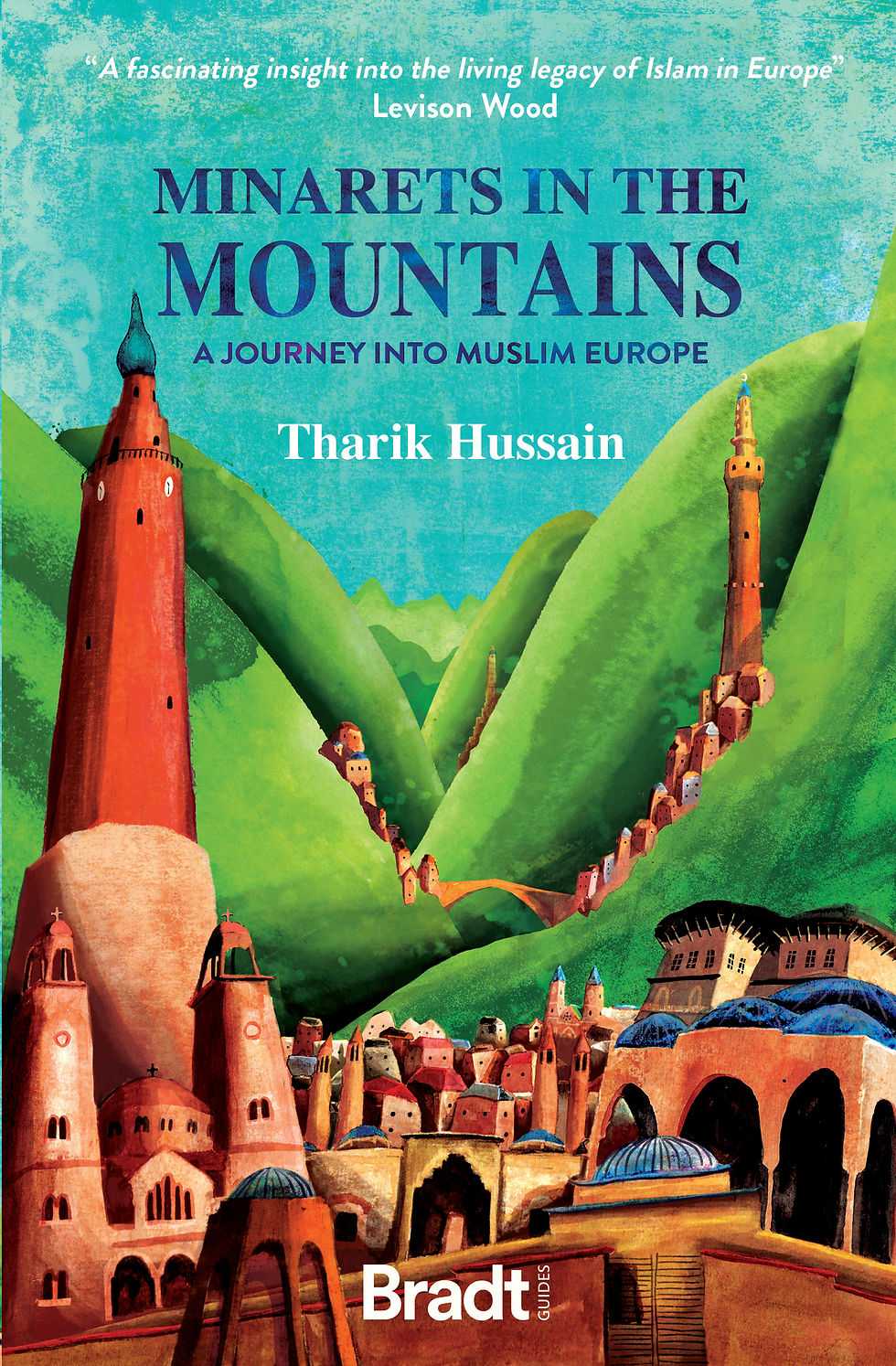Unexplored Heritage: Indigenous Muslims in Europe, Tharik Hussain
- BAYT AL FANN
- Oct 28, 2021
- 4 min read
Updated: Nov 30, 2021
Unknown to many, Europe is home to a rich, varied and ancient indigenous Muslim culture that is often left unexplored. This heritage and history has been revealed by author, travel writer and journalist, Tharik Hussain journalist who specialises in Muslim identity and culture, especially across the western hemisphere. His work has often served to decolonise popular religious and cultural histories and narratives. Tharik is the creator of Britain’s first Muslim heritage trails and has produced award-winning radio for the BBC on America’s earliest mosques and Muslim communities.

A new mosque in Albania
His latest book Minarets in The Mountains has been longlisted for the prestigious Baillie Gifford Prize 2021 which rewards excellence in non-fiction writing. The book follows him and his family on a journey through the western Balkans to discover a version of Islam that’s less known in Europe. It is a magical, eye-opening account of a journey into Europe that rarely makes the news and is in danger of being erased altogether.

Tharik’s family outside the eco-farmhouse with their hosts in Palamartsa, Bulgaria
Minarets in The Mountains is a vivid reimagining of a region's cultural heritage, unveiling forgotten Muslim communities, it is a quest that forces us to consider what makes up our own identities, and more importantly, who decides? We talked to Tharik to find out more about his experience writing Minarets in The Mountains and perspective on writing Muslim heritage and history.

The European-Muslim art style inside the Ali Pasha Mosque, Tetovo, North Macedonia
Minarets in the Mountains is an eye-opening account of your journey into Muslim Europe. What inspired you to set off with your wife and young daughters around the Western Balkans, and regions of Eastern Europe?
I guess once I became aware of Europe’s Islamic history going back 14 centuries, as Muslims of Europe, I wanted to explore what I saw as our heritage. I also wanted to make more people aware of Europe’s living Muslim legacy the works of Evliya Celebi, the Ottoman traveller whose footsteps I follow in.

A decorated fireplace inside an Ottoman house in Gjirokaster
You are the first travel writer to explore the indigenous Muslim communities, culture and heritage of Europe, why did you feel it was important to raise awareness of this history?
For that very reason – that I was the first. This is 14 centuries of history in total, and in the case of the living indigenous Muslims of Europe, at least six centuries. The fact that nobody had really explored this culture, community and heritage in popular literature in the English language was a travesty – and has clearly contributed to the normalising of the idea that Islam is foreign or alien to Europe.

The Blagaj Tekke one of the many places visited by Hussain and the Ottoman traveller Evliya Celebi (Bosnia and Herzegovina)
Did you find a hidden Muslim Europe? What stories did you uncover?
No, I found a Muslim Europe lying in plain sight; stories ranged from forgotten Muslim heroes who rescued Jews during the holocaust, forgotten saints and mystics, through to entire towns that are Muslim in places like Serbia where we imagine this does not exist.

A mosque and its minaret somewhere in the Bosnian mountains
What was the most memorable part of your travel experience?
There were many, but I guess being in Sarajevo, the Jerusalem of Europe, was particularly poignant given it still has an air of a highly tolerant, multifaith and multicultural space – yet, as I discovered it was not an exceptional thing historically. As I explain in the book, it was in fact the norm in historic Muslim Europe.

The ‘Effendi’ in Hussain’s book holding open an ancient Islamic book
Minarets in The Mountains also explores the historical roots of European Islamophobia, how did it feel uncovering uncomfortable histories?
After the initial rush of emotions that included anger and sadness, in a way I felt good that I was able to highlight these factors and begin the discussion that is clearly needed – the historic othering of regions of Europe that were, and still remain very Muslim.

Locals praying on the portico of the Gazi Husrev Beg Mosque, Sarajevo, Bosnia and Herzegovina
You are also a Fellow of the Centre of Religion and Heritage at the University of Groningen and have an MA in Islamic Studies. Why are stories of how Islam has shaped places and people important to you?
At a time when Islam is often in the media for primarily negative reasons, it is important to redress that imbalance with positive and engaging narratives about Muslims, especially in the west.

A historic Qur’an inside the Gazi Husrev Beg Library
What are your future aspirations and plans for telling Muslim stories and uncovering forgotten Islamic history?
Those that have been following my work before this book know that this is what I have been doing for a long time now, whether it be BBC radio documentaries about the earliest mosques of America; hidden Thai-Muslim heritage in guidebooks for Lonely Planet; or books like Minarets in the Mountains, I intend to keep exploring and making visible neglected Muslim heritage across the globe, and equally importantly, present it from the perspective of Muslim lens. So, more books, documentaries, and heritage trails to come I hope!

A decorated mehrab inside a mosque in Sarajevo
Tharik has written about his travels exploring Muslim culture and heritage across the globe for many of the world’s leading media brands and is the author of several travel guides for Lonely Planet, including Saudi Arabia (shortlisted for a Travel Media Award), Bahrain and Thailand. He has been named one of the UK’s most inspiring British Bangladeshis and is a Fellow at the University of Groningen’s Centre for Religion and Heritage.

The views of the interviewees who are featured in Bayt Al Fann do not necessarily reflect the views and opinions of Bayt Al Fann, its owners, employees and affiliates.









I appreciate you sharing such thoughtful content. it’s an absolute must-read ! Real Pune Service {} Chennai Service {} High-Prole Chennai Service {} Trusted Hinjewadi Service {] Independent Wakad Service {} Real Baner Service {} Hotel Escorts In Pune {} Pimple Saudagar Service {} Bavdhan Service {} Kothrud Service {} Magarpatta Service {} Lonavala 410401 (+) Ravet 410121 (+) Wakad 411057 (+) Hinjewadi 411057 (+) Baner 411045 (+) Aundh 411007 (+) Pimple Saudagar 411021 (+) Shivaji Nagar 411027 (+) Kalyani Nagar 411014 (+) Viman Nagar 411014 (+) Magarpatta City 411013 (+) Pimpri Chinchwad 411033
Best IPTV 4K – Unlock stunning 4K quality with a wide range of live TV channels and on-demand content for an unbeatable viewing experience. Best IPTV
شيخ روحاني
رقم شيخ روحاني
شيخ روحاني لجلب الحبيب
الشيخ الروحاني
الشيخ الروحاني
شيخ روحاني سعودي
رقم شيخ روحاني
شيخ روحاني مضمون
Berlinintim
Berlin Intim
جلب الحبيب
https://www.eljnoub.com/
https://hurenberlin.com/
youtube
代发外链 提权重点击找我;
google留痕 google留痕;
Fortune Tiger Fortune Tiger;
Fortune Tiger Fortune Tiger;
Fortune Tiger Slots Fortune…
站群/ 站群;
万事达U卡办理 万事达U卡办理;
VISA银联U卡办理 VISA银联U卡办理;
U卡办理 U卡办理;
万事达U卡办理 万事达U卡办理;
VISA银联U卡办理 VISA银联U卡办理;
U卡办理 U卡办理;
온라인 슬롯 온라인 슬롯;
온라인카지노 온라인카지노;
바카라사이트 바카라사이트;
EPS Machine EPS Machine;
EPS Machine EPS Machine;
EPS Machine EPS Machine;
무료카지노 무료카지노;
무료카지노 무료카지노;
google 优化 seo技术+jingcheng-seo.com+秒收录;
Fortune Tiger Fortune Tiger;
Fortune Tiger Fortune Tiger;
Fortune Tiger Slots Fortune…
站群/ 站群
gamesimes gamesimes;
03topgame 03topgame
EPS Machine EPS Cutting…
EPS Machine EPS and…
EPP Machine EPP Shape…
Fortune Tiger Fortune Tiger;
EPS Machine EPS and…
betwin betwin;
777 777;
slots slots;
Fortune Tiger Fortune Tiger;